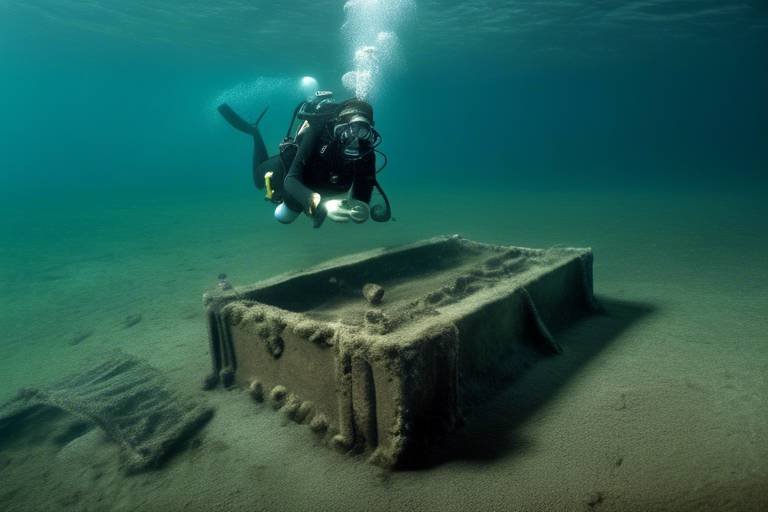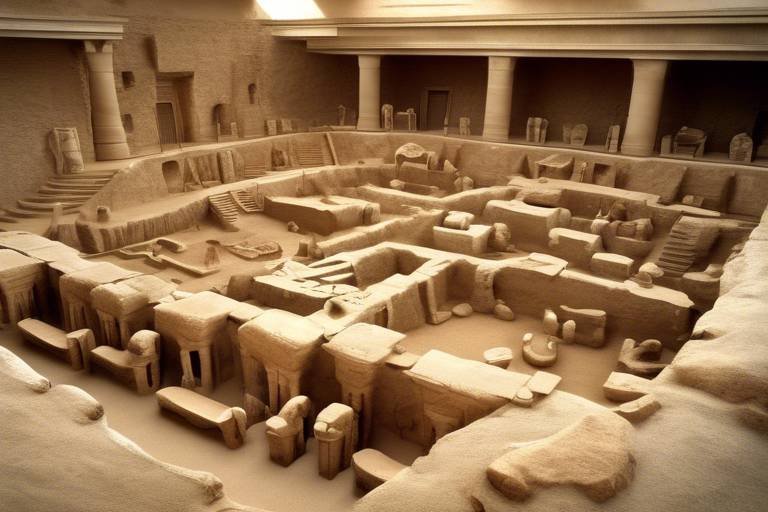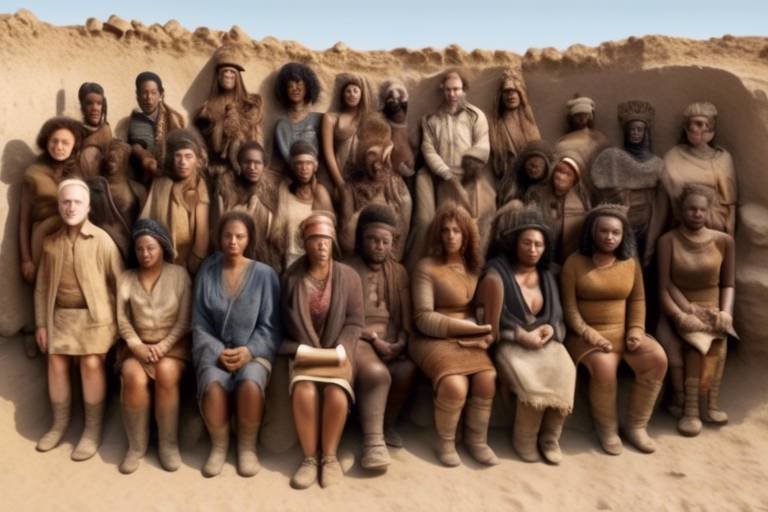Understanding Stratigraphy in Archaeological Digs
Stratigraphy, a term that may sound complex at first, is like peeling back the layers of time in an archaeological dig. Imagine each layer of soil as a chapter in a book, each artifact a clue waiting to be deciphered. By carefully studying these layers, archaeologists can unveil the secrets hidden beneath the ground and piece together the puzzle of the past.
As archaeologists delve into the earth, they follow the Law of Superposition, which guides them in understanding that the deeper they dig, the further back in time they travel. Just like a detective solving a mystery, they meticulously record each layer, creating a visual timeline of the site's history. Through this process, they can unravel the stories left behind by ancient civilizations.
Stratigraphy is not just about digging through dirt; it's a meticulous process of analysis and interpretation. By examining the different layers, archaeologists can identify patterns of human activity, environmental changes, and even natural disasters that have shaped the landscape over centuries. It's like reading the pages of a history book written in the language of soil and stone.
One of the challenges archaeologists face is distinguishing between layers that have been naturally deposited and those that have been disturbed by later human interventions. It's like trying to separate the original melody from the noise added by subsequent generations. Despite these obstacles, the careful study of stratigraphy continues to unlock the mysteries of the past.
With the aid of modern technology, such as LiDAR scanning and ground-penetrating radar, archaeologists can now peer beneath the surface without disturbing the site. These tools act like X-ray vision, allowing researchers to see beyond what meets the eye and uncover hidden structures or artifacts buried deep within the earth. The marriage of traditional methods with technological advancements has revolutionized the field of stratigraphy.
Looking ahead, the future of stratigraphic research holds exciting possibilities. By embracing innovation and collaboration, archaeologists can push the boundaries of what we know about the past. Just as each layer in an archaeological dig holds a story waiting to be told, the future of stratigraphy promises to reveal even more about our shared human history.
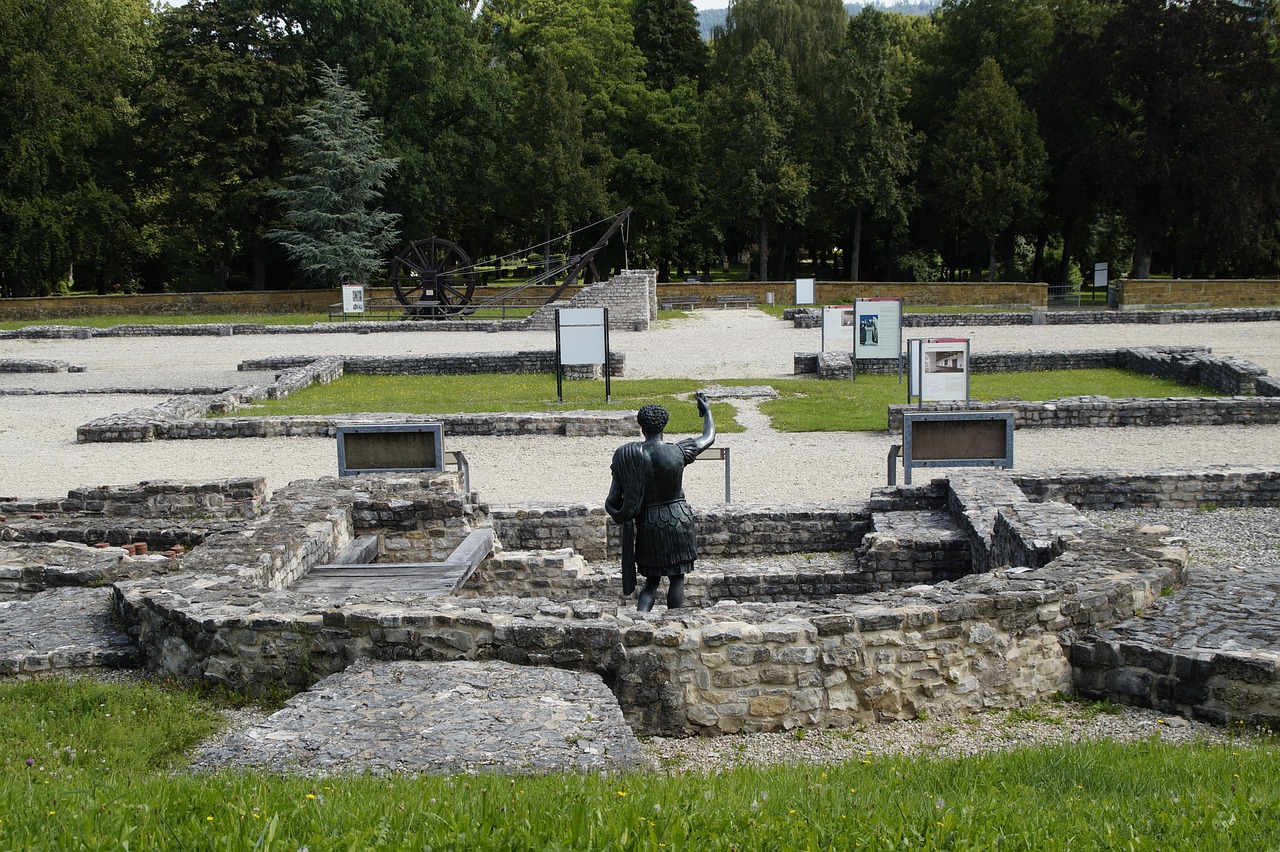
Definition of Stratigraphy
Stratigraphy, in the realm of archaeology, is a fundamental concept that delves into the intricate layers of rock, soil, and artifacts found in the Earth's crust. It serves as a methodical study of these layers, aiming to unravel the chronological order in which they were deposited. By meticulously examining the stratigraphy of a site, archaeologists can unearth a wealth of information about the past, piecing together the historical puzzle of civilizations long gone.
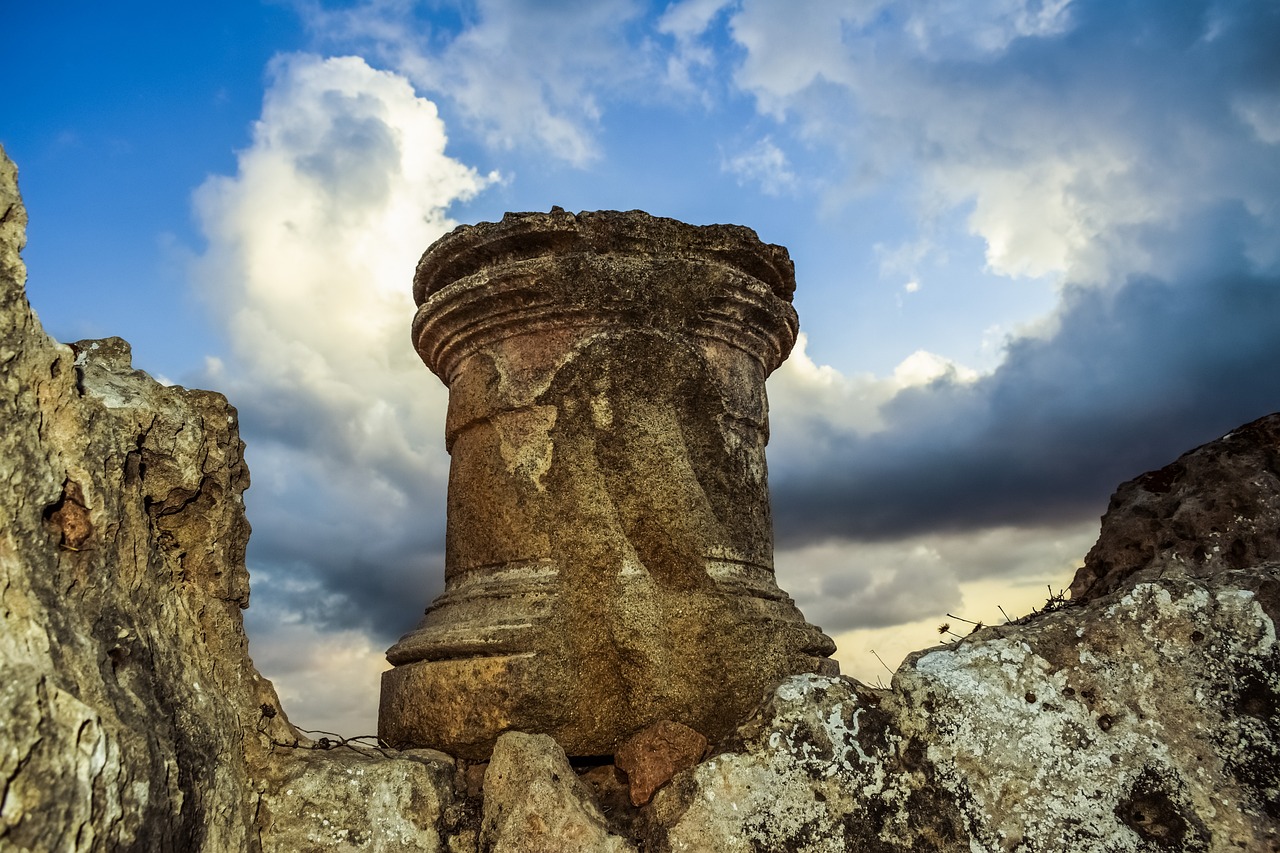
Principles of Stratigraphy
When delving into the world of stratigraphy, it is crucial to understand the foundational principles that guide this field of study. One of the fundamental principles is the Law of Superposition, which asserts that in an undisturbed sequence of layers, the oldest layer lies at the bottom, while the youngest layer is positioned at the top. This principle forms the basis for establishing the chronological order of deposits at an archaeological site.
Another key principle is the Law of Original Horizontality, which posits that sedimentary layers are originally deposited in horizontal layers. Any deviation from this horizontal orientation indicates some form of geological disturbance or tectonic activity that has altered the original arrangement of the strata.
Furthermore, the Law of Lateral Continuity emphasizes the extent of sedimentary layers, suggesting that deposits originally extended in all directions until they thinned out or terminated due to geological boundaries or erosional processes. This principle aids in understanding the spatial distribution of deposits across a site.
By adhering to these , archaeologists can unravel the complex layers of soil and artifacts, reconstructing the historical sequence of events and gaining valuable insights into the past civilizations that once inhabited the site.
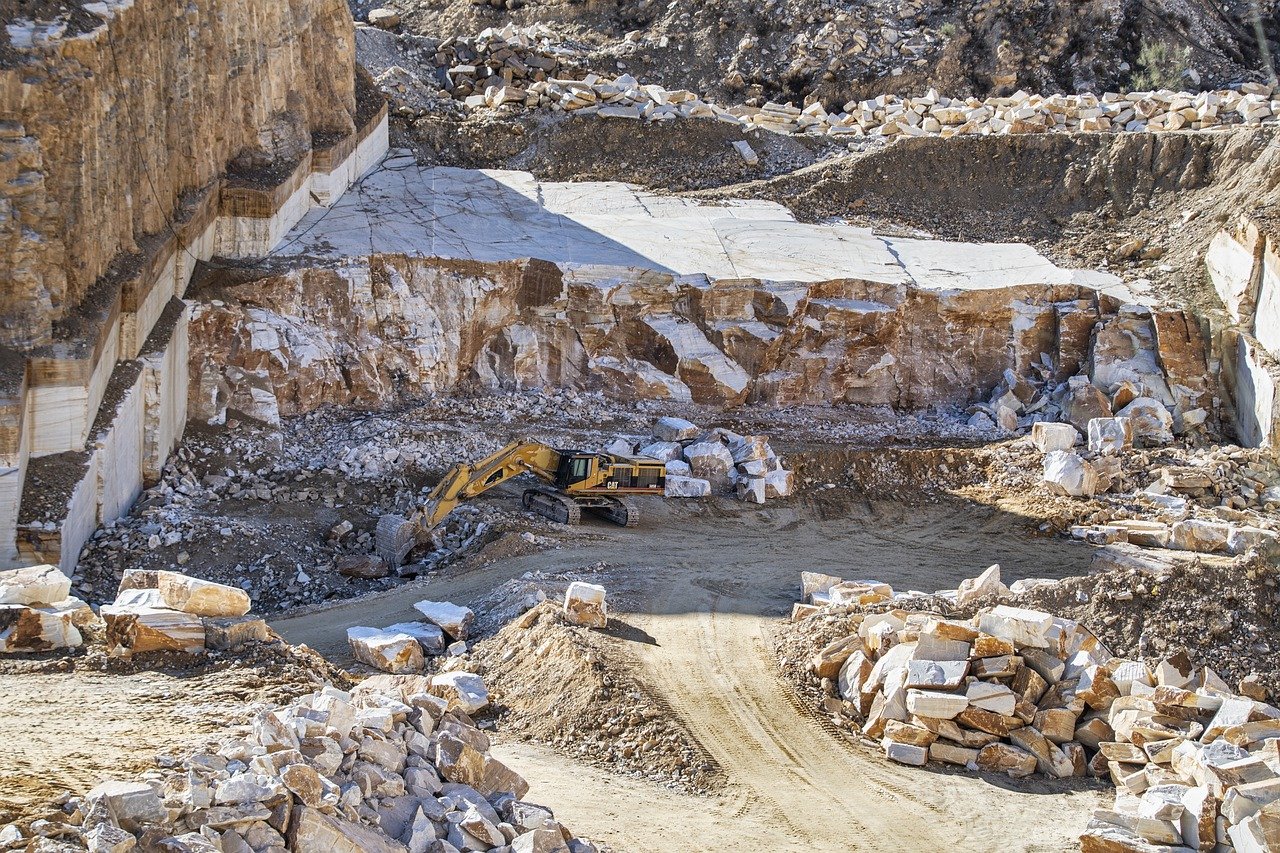
Methods of Stratigraphic Analysis
Stratigraphy is a crucial aspect of archaeological excavations, providing insights into the chronological sequence of deposits. Understanding the layers of soil and artifacts can help archaeologists piece together the history of a site and uncover valuable information about past civilizations.
Stratigraphy refers to the study of rock layers and layering in the Earth's crust. In archaeology, it involves analyzing the layers of soil, sediment, and artifacts at a site to determine their chronological order and understand the site's history.
Stratigraphy is based on several key principles, including the Law of Superposition, which states that in an undisturbed sequence of layers, the oldest layer is at the bottom and the youngest is at the top. Other principles include the Law of Original Horizontality and the Law of Lateral Continuity.
When it comes to analyzing stratigraphy, archaeologists employ various methods to delve deep into the layers of the past. Excavation plays a fundamental role, allowing researchers to physically uncover and examine the stratigraphic layers. Through meticulous recording using drawings, photographs, and detailed notes, archaeologists document the intricate details of each layer. Creating stratigraphic profiles aids in visualizing the vertical sequence of deposits, providing a comprehensive view of the site's history.
Additionally, techniques like carbon dating and pollen analysis are utilized to date the layers accurately and reconstruct past environments. By analyzing the composition of materials found within different strata, archaeologists can gain valuable insights into the activities and conditions that shaped the site over time.
Interpreting stratigraphic data involves understanding the relationships between different layers, identifying changes in deposition over time, and recognizing disturbances caused by human activity or natural processes. This analysis helps archaeologists create a timeline of events at a site.
Stratigraphy is essential in archaeology as it provides a framework for dating artifacts and understanding site formation processes. By studying stratigraphy, archaeologists can reconstruct past landscapes, human activities, and cultural changes, contributing to a more comprehensive interpretation of the archaeological record.
Despite its significance, stratigraphic analysis faces challenges such as post-depositional disturbances, site erosion, and the presence of mixed or disturbed layers. Archaeologists must carefully navigate these complexities to accurately interpret the stratigraphy of a site.
Advancements in technology, such as LiDAR scanning, ground-penetrating radar, and 3D modeling, have enhanced stratigraphic analysis in archaeology. These tools enable archaeologists to non-invasively explore and visualize subsurface features, improving the accuracy and efficiency of stratigraphic investigations.
The future of stratigraphic research in archaeology lies in integrating traditional methods with cutting-edge technologies, promoting interdisciplinary collaborations, and exploring new approaches to analyze complex stratigraphic sequences. By embracing innovation, archaeologists can uncover deeper insights into the past through stratigraphy.
Q: Why is stratigraphy important in archaeology?
A: Stratigraphy helps archaeologists establish the chronological order of deposits, date artifacts, and reconstruct past environments, providing crucial insights into human history.
Q: What are some challenges faced in stratigraphic analysis?
A: Challenges include post-depositional disturbances, site erosion, and dealing with mixed or disturbed layers, which require careful interpretation by archaeologists.
Q: How do technological advances contribute to stratigraphic analysis?
A: Technologies like LiDAR scanning and ground-penetrating radar allow archaeologists to explore subsurface features non-invasively, enhancing the accuracy and efficiency of stratigraphic investigations.
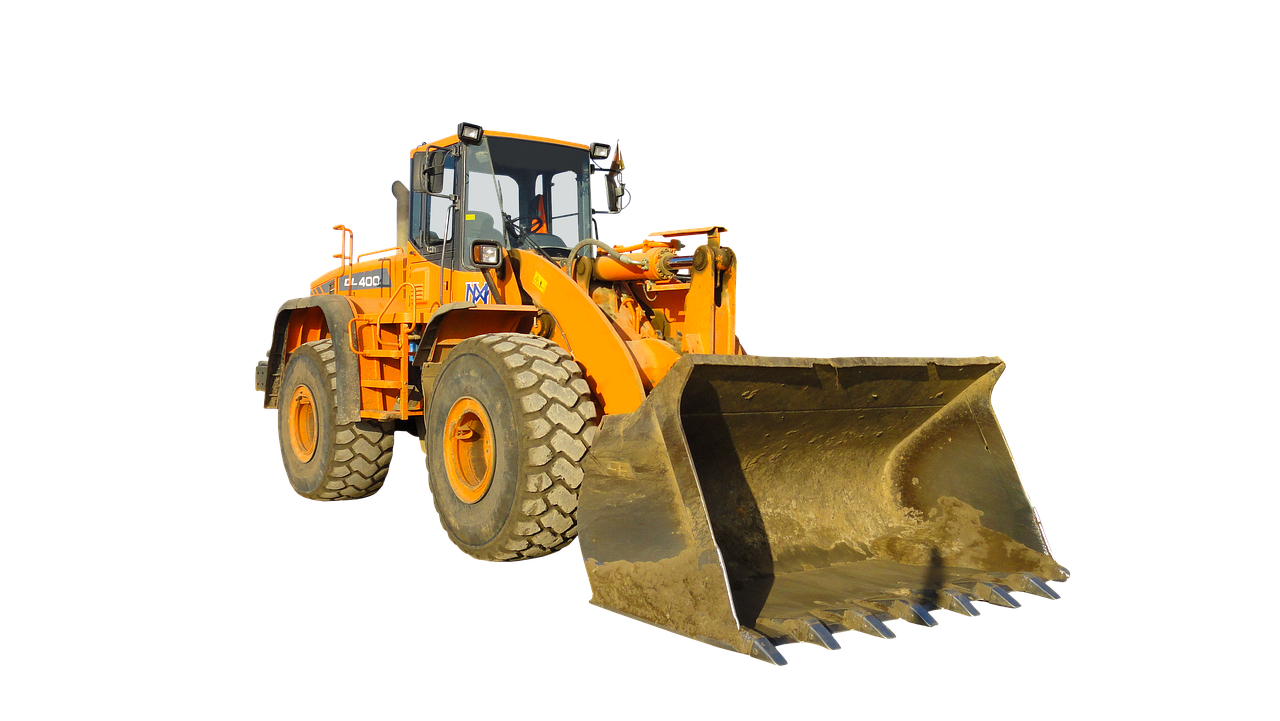
Interpreting Stratigraphic Data
Interpreting stratigraphic data is a complex yet crucial aspect of archaeological investigations. By carefully analyzing the layers of soil, sediment, and artifacts at a site, archaeologists can unravel the story hidden beneath the surface. One method commonly used in interpreting stratigraphic data is creating stratigraphic profiles, which provide a visual representation of the different layers and their relationships.
When examining these profiles, archaeologists look for changes in sediment types, colors, and textures, as well as any signs of disturbance or mixing. These variations can indicate shifts in deposition over time, the presence of occupation layers, or even events such as natural disasters or human activities. By identifying these patterns, researchers can begin to piece together the sequence of events that shaped the site.
Moreover, the analysis of stratigraphic data involves comparing the findings with known historical timelines or other archaeological sites in the region. This comparative approach helps archaeologists establish correlations, identify cultural connections, and refine the dating of artifacts within the context of the site's stratigraphy.
In some cases, archaeologists may also use advanced techniques like geochemical analysis or micromorphology to gain a more detailed understanding of the stratigraphic layers. These methods can provide insights into the composition of soils, the presence of organic materials, or the traces of ancient activities that may not be visible to the naked eye.
Overall, interpreting stratigraphic data requires a meticulous and interdisciplinary approach, combining geological knowledge, archaeological expertise, and technological tools. By carefully analyzing the layers of deposits and understanding their significance, archaeologists can reconstruct past environments, human behaviors, and cultural developments with precision and clarity.
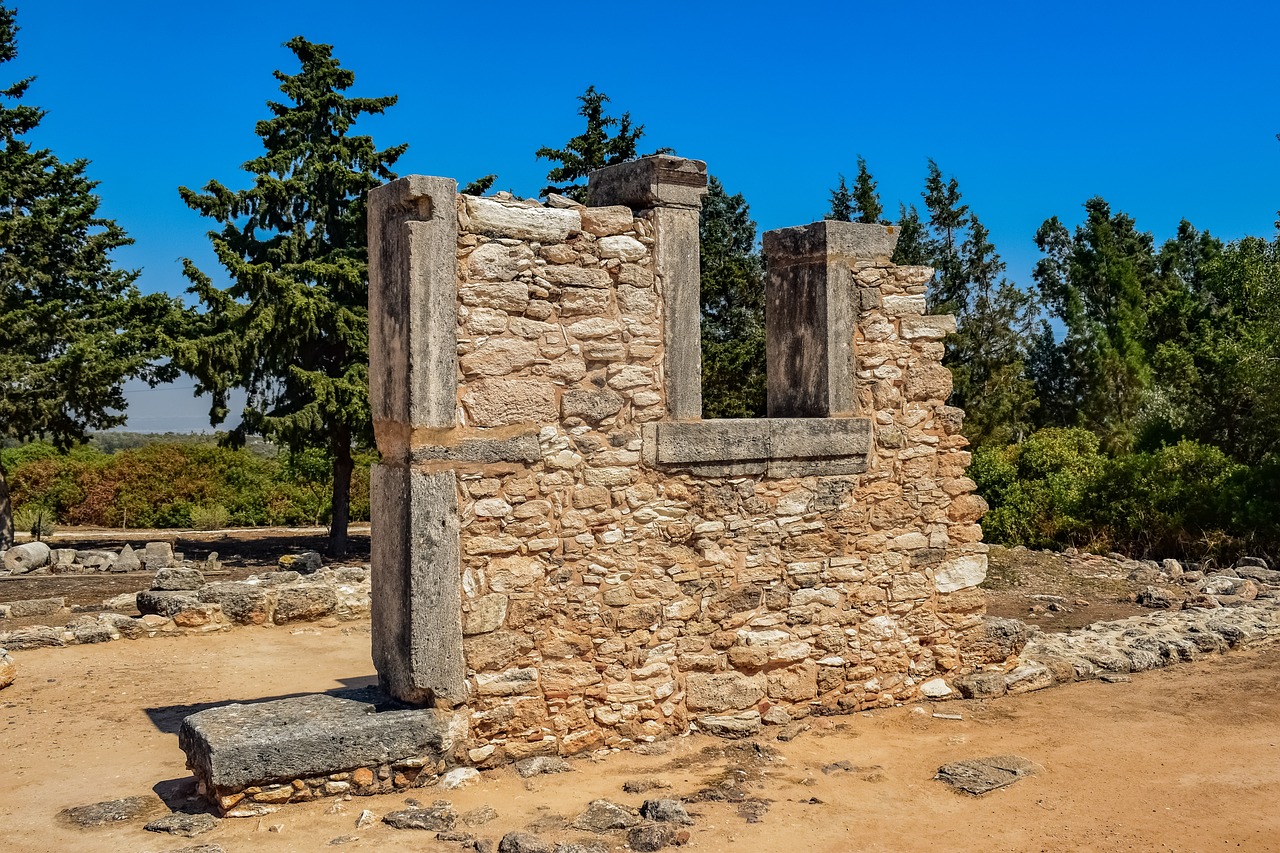
Importance of Stratigraphy in Archaeology
Stratigraphy is a crucial aspect of archaeological excavations, providing insights into the chronological sequence of deposits. Understanding the layers of soil and artifacts can help archaeologists piece together the history of a site and uncover valuable information about past civilizations.
Stratigraphy refers to the study of rock layers and layering in the Earth's crust. In archaeology, it involves analyzing the layers of soil, sediment, and artifacts at a site to determine their chronological order and understand the site's history.
Stratigraphy is based on several key principles, including the Law of Superposition, which states that in an undisturbed sequence of layers, the oldest layer is at the bottom and the youngest is at the top. Other principles include the Law of Original Horizontality and the Law of Lateral Continuity.
Archaeologists use various methods to analyze stratigraphy, such as excavation, recording the layers through drawings and photographs, and creating stratigraphic profiles. They also employ techniques like carbon dating and pollen analysis to date the layers and reconstruct past environments.
Interpreting stratigraphic data involves understanding the relationships between different layers, identifying changes in deposition over time, and recognizing disturbances caused by human activity or natural processes. This analysis helps archaeologists create a timeline of events at a site.
Stratigraphy is essential in archaeology as it provides a framework for dating artifacts and understanding site formation processes. By studying stratigraphy, archaeologists can reconstruct past landscapes, human activities, and cultural changes, contributing to a more comprehensive interpretation of the archaeological record.
Despite its significance, stratigraphic analysis faces challenges such as post-depositional disturbances, site erosion, and the presence of mixed or disturbed layers. Archaeologists must carefully navigate these complexities to accurately interpret the stratigraphy of a site.
Advancements in technology, such as LiDAR scanning, ground-penetrating radar, and 3D modeling, have enhanced stratigraphic analysis in archaeology. These tools enable archaeologists to non-invasively explore and visualize subsurface features, improving the accuracy and efficiency of stratigraphic investigations.
The future of stratigraphic research in archaeology lies in integrating traditional methods with cutting-edge technologies, promoting interdisciplinary collaborations, and exploring new approaches to analyze complex stratigraphic sequences. By embracing innovation, archaeologists can uncover deeper insights into the past through stratigraphy.
Q: What is the significance of stratigraphy in archaeological research?
A: Stratigraphy plays a crucial role in dating artifacts, understanding site formation processes, and reconstructing past environments, contributing to a comprehensive interpretation of the archaeological record.
Q: How do archaeologists analyze stratigraphy?
A: Archaeologists use methods such as excavation, recording layers through drawings and photographs, and employing techniques like carbon dating and pollen analysis to analyze and interpret stratigraphic data.
Q: What challenges do archaeologists face in stratigraphic analysis?
A: Archaeologists encounter challenges such as post-depositional disturbances, site erosion, and the presence of mixed or disturbed layers, requiring careful navigation to accurately interpret site stratigraphy.
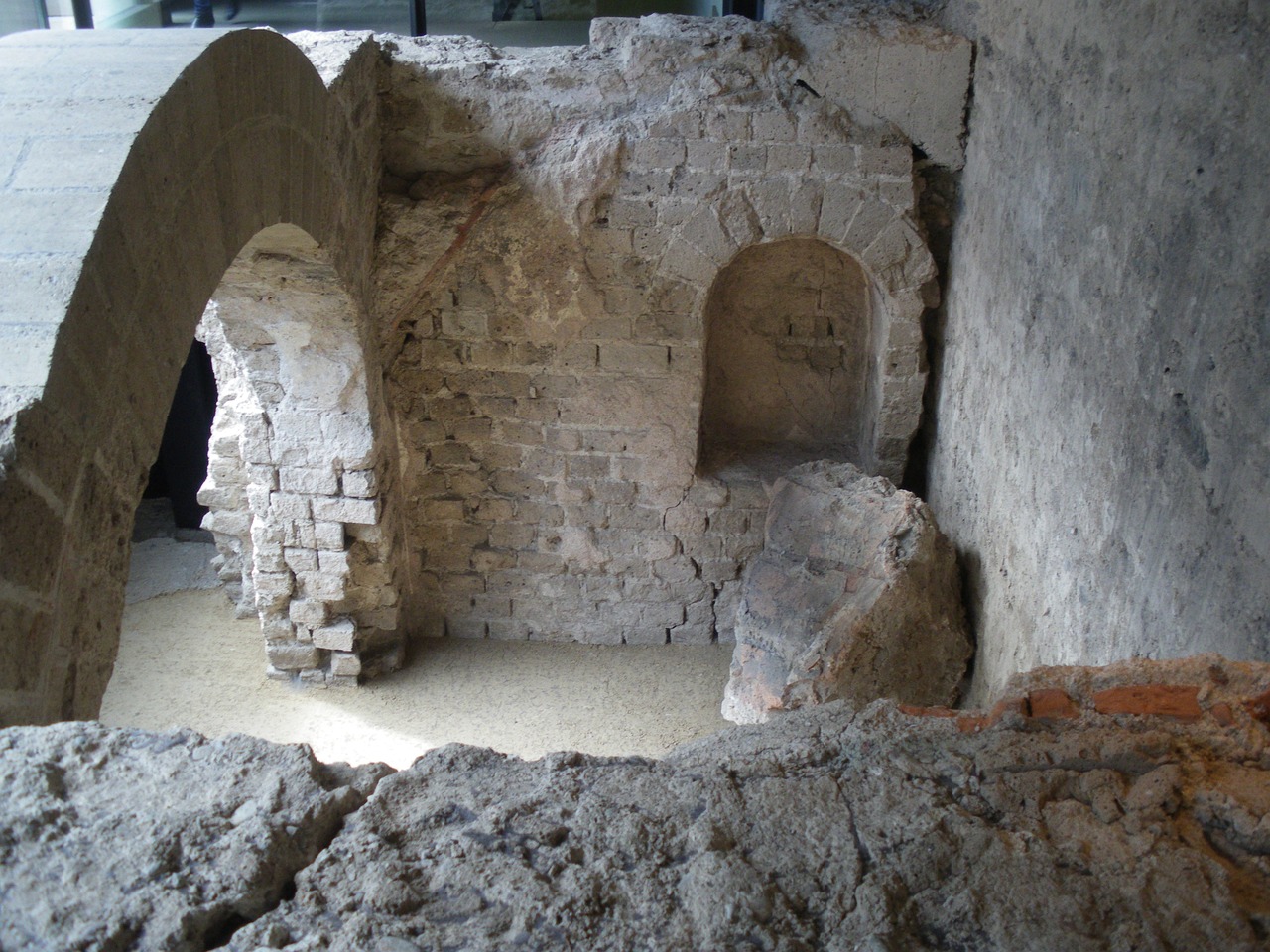
Challenges in Stratigraphic Analysis
Stratigraphy is a crucial aspect of archaeological excavations, providing insights into the chronological sequence of deposits. Understanding the layers of soil and artifacts can help archaeologists piece together the history of a site and uncover valuable information about past civilizations.
Stratigraphy refers to the study of rock layers and layering in the Earth's crust. In archaeology, it involves analyzing the layers of soil, sediment, and artifacts at a site to determine their chronological order and understand the site's history.
Stratigraphy is based on several key principles, including the Law of Superposition, which states that in an undisturbed sequence of layers, the oldest layer is at the bottom and the youngest is at the top. Other principles include the Law of Original Horizontality and the Law of Lateral Continuity.
Archaeologists use various methods to analyze stratigraphy, such as excavation, recording the layers through drawings and photographs, and creating stratigraphic profiles. They also employ techniques like carbon dating and pollen analysis to date the layers and reconstruct past environments.
Interpreting stratigraphic data involves understanding the relationships between different layers, identifying changes in deposition over time, and recognizing disturbances caused by human activity or natural processes. This analysis helps archaeologists create a timeline of events at a site.
Stratigraphy is essential in archaeology as it provides a framework for dating artifacts and understanding site formation processes. By studying stratigraphy, archaeologists can reconstruct past landscapes, human activities, and cultural changes, contributing to a more comprehensive interpretation of the archaeological record.
Despite its significance, stratigraphic analysis faces challenges such as post-depositional disturbances, site erosion, and the presence of mixed or disturbed layers. Archaeologists must carefully navigate these complexities to accurately interpret the stratigraphy of a site.
Advancements in technology, such as LiDAR scanning, ground-penetrating radar, and 3D modeling, have enhanced stratigraphic analysis in archaeology. These tools enable archaeologists to non-invasively explore and visualize subsurface features, improving the accuracy and efficiency of stratigraphic investigations.
The future of stratigraphic research in archaeology lies in integrating traditional methods with cutting-edge technologies, promoting interdisciplinary collaborations, and exploring new approaches to analyze complex stratigraphic sequences. By embracing innovation, archaeologists can uncover deeper insights into the past through stratigraphy.
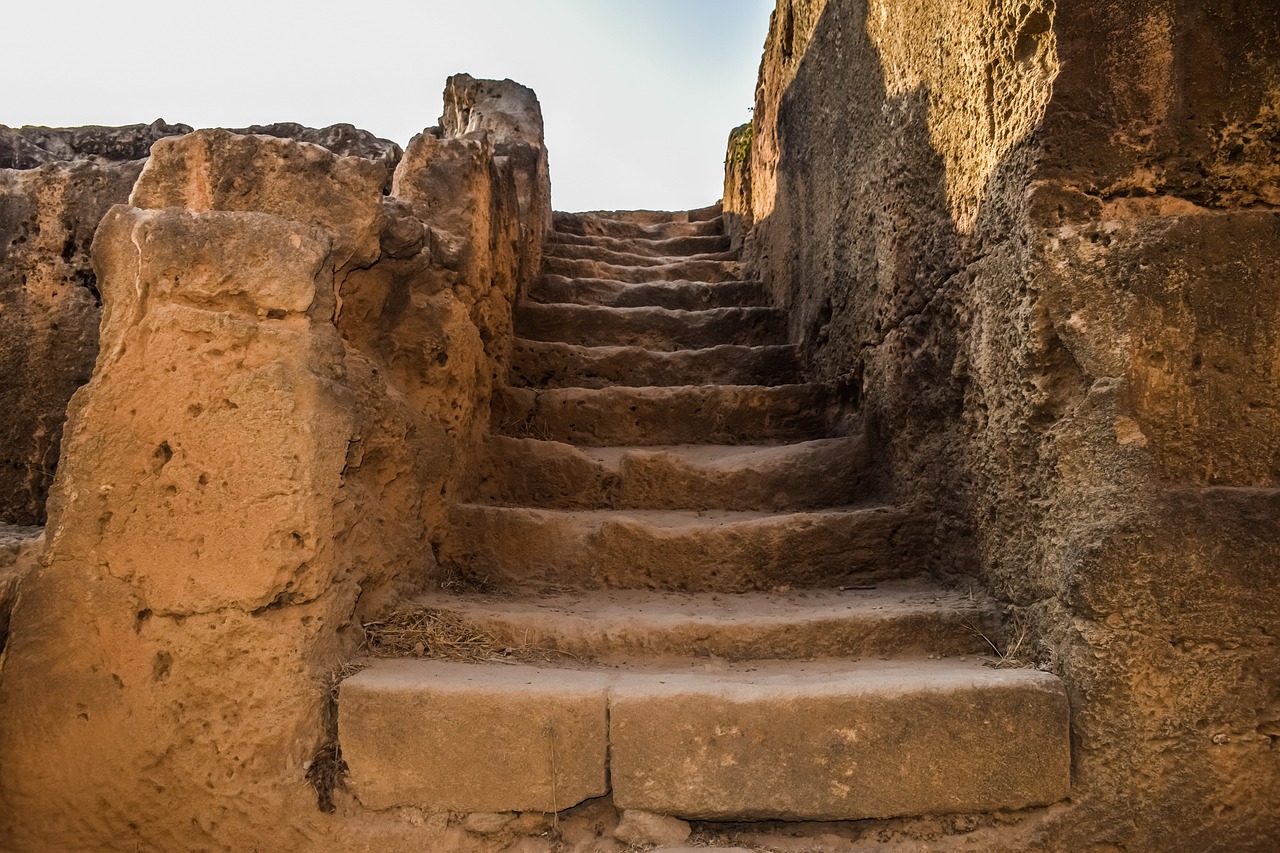
Technological Advances in Stratigraphy
Technological advances have revolutionized the field of stratigraphy in archaeology, offering new ways to uncover hidden secrets beneath the surface. One of the significant advancements is LiDAR scanning, a remote sensing technology that uses laser light to map and visualize terrain in high detail. This allows archaeologists to detect subtle changes in elevation and identify buried structures without extensive excavation.
Ground-penetrating radar (GPR) is another valuable tool that has transformed stratigraphic analysis. By sending electromagnetic pulses into the ground and measuring the reflected signals, GPR can create subsurface images revealing buried features like walls, foundations, and artifacts. This non-invasive method helps archaeologists map the stratigraphy of a site without disturbing the layers.
Additionally, the adoption of 3D modeling techniques has enhanced the visualization of stratigraphic data. Archaeologists can now create digital reconstructions of excavation areas, allowing for a more immersive exploration of stratigraphic layers and artifacts. These detailed models provide a better understanding of the site's layout and spatial relationships, aiding in the interpretation of stratigraphic sequences.

Future Directions in Stratigraphic Research
The future of stratigraphic research in archaeology is an exciting frontier that holds immense potential for uncovering new insights into the past. As technology continues to advance, archaeologists are increasingly exploring innovative approaches to enhance their understanding of stratigraphy and its implications for interpreting archaeological sites.
One key direction in future stratigraphic research is the integration of traditional methods with cutting-edge technologies. By combining established excavation techniques with state-of-the-art tools like LiDAR scanning and ground-penetrating radar, archaeologists can gain a more comprehensive view of stratigraphic layers and unearth hidden features beneath the surface.
Interdisciplinary collaborations are also shaping the future of stratigraphic research. Archaeologists are partnering with experts from diverse fields such as geology, geography, and computer science to leverage their unique perspectives and skills in analyzing complex stratigraphic sequences. This collaborative approach fosters a more holistic understanding of archaeological sites and promotes innovative solutions to research challenges.
Exploring new methods and approaches to analyze stratigraphy is another key aspect of future research directions. Archaeologists are constantly seeking novel ways to interpret stratigraphic data, such as developing advanced modeling techniques and refining dating methods to enhance the accuracy of chronological reconstructions. By pushing the boundaries of conventional stratigraphic analysis, researchers can push the boundaries of knowledge and unlock deeper insights into the past.
Frequently Asked Questions
- What is the significance of understanding stratigraphy in archaeological digs?
Understanding stratigraphy in archaeological digs is crucial as it helps archaeologists establish the chronological sequence of deposits, enabling them to reconstruct the history of a site and gain valuable insights into past civilizations.
- What are the key principles of stratigraphy?
The key principles of stratigraphy include the Law of Superposition, which states that the oldest layer is at the bottom and the youngest at the top in an undisturbed sequence. Other principles include the Law of Original Horizontality and the Law of Lateral Continuity.
- How do archaeologists analyze stratigraphy?
Archaeologists analyze stratigraphy through methods like excavation, recording layers through drawings and photographs, creating stratigraphic profiles, and using techniques such as carbon dating and pollen analysis to date layers and reconstruct past environments.
- Why is interpreting stratigraphic data important?
Interpreting stratigraphic data is crucial as it helps in understanding the relationships between layers, identifying changes over time, and recognizing disturbances caused by human or natural factors. This analysis aids in creating a timeline of events at a site.
- What are the challenges faced in stratigraphic analysis?
Challenges in stratigraphic analysis include post-depositional disturbances, site erosion, and the presence of mixed or disturbed layers. Archaeologists need to navigate these complexities carefully to interpret a site's stratigraphy accurately.
- How have technological advances impacted stratigraphy in archaeology?
Technological advances like LiDAR scanning, ground-penetrating radar, and 3D modeling have enhanced stratigraphic analysis by enabling non-invasive exploration and visualization of subsurface features, improving the accuracy and efficiency of investigations.
- What does the future hold for stratigraphic research in archaeology?
The future of stratigraphic research involves integrating traditional methods with modern technologies, fostering interdisciplinary collaborations, and exploring innovative approaches to analyze complex stratigraphic sequences, aiming to uncover deeper insights into the past.







